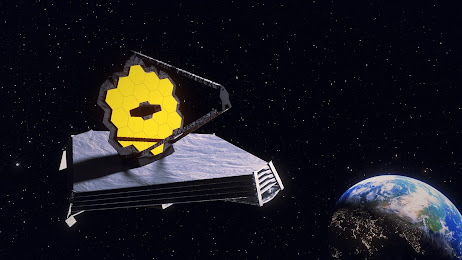Amazon's Project Kuiper: Revolutionizing Global Connectivity
In an increasingly interconnected world, the internet has become a fundamental necessity for communication, education, business, and countless other facets of daily life. However, over 2.7 billion people still lack reliable internet access, predominantly in remote and underserved regions. Recognizing this challenge, Amazon has embarked on an ambitious mission called Project Kuiper—a low Earth orbit (LEO) satellite internet, initiative aiming to deliver fast, affordable, and global broadband solutions. This blog delves into the intricacies of Project Kuiper, its technology, potential impact, and the challenges it faces.
Amazon's Project Kuiper: Revolutionizing Global Connectivity
The Vision Behind Project Kuiper
Amazon announced Project Kuiper in 2019, committing to deploying a constellation of 3,236 satellites in (LEO) satellite internet, to provide low-latency, high-speed internet services worldwide. Named after the Kuiper Belt, a region of the solar system beyond Neptune, this project aligns with Amazon's broader mission of "building a better future" by leveraging its technological prowess.
The overarching goals of Project Kuiper include:
1. Closing the Digital Divide: Bringing reliable internet access to remote and underserved communities.
2. Economic Empowerment: Enabling businesses in rural areas to access global markets and resources.
3.Innovation in Connectivity: Enhancing internet infrastructure with cutting-edge satellite technology.
4. Support for Other Ventures: Providing connectivity for smart devices, autonomous vehicles, and Amazon’s cloud services (AWS).
How Project Kuiper Works
Project Kuiper employs a constellation of satellites in (LEO) satellite internet, orbiting at altitudes between 590 and 630 kilometers. This configuration is crucial for reducing latency—a common challenge in satellite-based internet services. Here’s how the system works:
1. Satellite Constellation
Unlike traditional geostationary satellites, which operate at altitudes of over 35,000 kilometers, (LEO) satellite internet, are closer to Earth. This proximity allows for lower latency, making real-time applications like video calls, gaming, and telemedicine more seamless. Amazon plans to launch these satellites in phases, aiming for full deployment by the late 2020s.
2. Ground Infrastructure
Ground stations equipped with advanced phased-array antennas will communicate with the satellites. These stations serve as hubs to relay data between the satellites and the broader internet backbone.
3. Customer Terminals
End-users will connect via compact, affordable customer terminals. Amazon has developed a 12-inch square phased-array antenna that promises high performance at a lower cost, making it accessible to households, schools, and businesses.
Key Features of Project Kuiper
1.High-Speed Internet: Amazon claims Project Kuiper will deliver speeds of up to 400 Mbps, sufficient for streaming, gaming, and remote work.
2. Low Latency: By operating in LEO, the satellites aim to achieve latencies as low as 20-40 milliseconds, comparable to terrestrial broadband services.
3. Scalability: The modular nature of the satellite constellation allows Amazon to expand or adapt the network based on demand.
4. Cost-Effectiveness: Amazon’s economies of scale, combined with its expertise in logistics and manufacturing, could make the service more affordable than existing satellite internet options.
The Technology Behind Kuiper
Amazon is integrating advanced technologies into Project Kuiper, ensuring it stands out in the competitive satellite internet landscape.
1. Phased-Array Antennas
Phased-array technology enables the satellites to dynamically focus their beams, delivering consistent coverage even in areas with high demand. This reduces service disruptions and optimizes bandwidth allocation.
2. Machine Learning (ML) and AI
Amazon leverages AI and ML to manage satellite traffic, predict congestion, and dynamically adjust routing for optimal performance. These technologies are also crucial for collision avoidance and orbital debris management.
3. Custom Satellites
Amazon is designing its satellites in-house, incorporating power-efficient components and propulsion systems for extended operational life. These satellites will also feature onboard processing capabilities to minimize data relay delays.
4. Reusable Launch Systems
Amazon's partnership with Blue Origin (founded by Jeff Bezos) provides access to reusable rockets like the New Glenn, potentially reducing launch costs and environmental impact.
Comparing Project Kuiper to Starlink
Elon Musk’s Starlink, by SpaceX, is currently the most well-known LEO satellite internet service. While Starlink has an early lead, Project Kuiper brings unique advantages:
1. Scalability: Amazon’s vast logistics and manufacturing expertise could give it an edge in scaling production and deployment.
2. Integration with AWS: Kuiper's seamless integration with Amazon Web Services (AWS) could position it as a leader in cloud-connected solutions.
3. Affordability: Amazon’s customer-first approach and focus on cost-effective terminals may appeal to budget-conscious users.
4. Partnership Ecosystem: Amazon has a history of fostering partnerships, which could expedite Kuiper’s adoption in various industries.
Potential Impact of Project Kuiper
The successful deployment of Project Kuiper could revolutionize internet connectivity and have far-reaching implications across sectors.
1. Education
In rural and remote regions, lack of internet access is a significant barrier to education. Project Kuiper can empower schools and students with online learning resources, bridging the educational gap.
2. Healthcare
Reliable internet connectivity enables telemedicine, allowing healthcare professionals to consult patients in underserved areas. Project Kuiper could support real-time video consultations, diagnostics, and remote surgeries.
3. Economic Development
Small businesses in remote areas can benefit from global market access, online tools, and e-commerce platforms, fostering economic growth.
4. Disaster Relief
Satellite internet is invaluable during natural disasters, where terrestrial infrastructure may be compromised. Kuiper’s low-latency connectivity could enhance communication and coordination for emergency services.
Challenges Facing Project Kuiper
While Project Kuiper has immense potential, it faces several challenges:
1. Regulatory Hurdles
Amazon must navigate complex regulations for satellite deployment and frequency allocation. Coordination with national and international bodies is essential.
2. Competition
Starlink, OneWeb, and other emerging players are already operational or nearing deployment. Kuiper must differentiate itself in a crowded market.
3. Orbital Debris
With thousands of satellites planned, orbital congestion and debris management are critical concerns. Amazon must adopt robust measures to prevent collisions and ensure sustainability.
4. Technical Complexities
Building and managing a satellite network of this scale requires overcoming engineering challenges, including satellite durability, maintenance, and signal interference.
The Road Ahead for Project Kuiper
Amazon plans to begin deploying Project Kuiper satellites in 2024, with initial services expected by 2025. Early launches will test the system's performance, paving the way for broader deployment.
Future plans may include:
1. Expanding Satellite Constellations: Increasing coverage and capacity as demand grows.
2. IoT Connectivity: Supporting a growing network of IoT devices, including smart agriculture sensors and autonomous vehicles.
3. Global Partnerships: Collaborating with governments and organizations to provide affordable internet access in developing countries.
Project Kuiper represents Amazon’s bold step into the frontier of global connectivity. By combining cutting-edge technology with its unparalleled operational expertise, Amazon has the potential to transform internet access for millions worldwide. While challenges remain, the project’s success could reshape how we connect, communicate, and collaborate in the 21st century.
As we await its first launches, one thing is certain: Project Kuiper has the potential to redefine global broadband, bringing us closer to a truly connected world.






Comments
Post a Comment